I have a list of files with the following pattern: sampleid_samplename_counts.csv representing count matrix with cellname in rows and genes in columns.
I'm trying to generate count matrix from these files to load in the Seurat package that need cellnames in columns and gene in rows.
I succeed in obtaining the matrix with the following where x is a vectors of all the .csv filenames (I needed to create a new name for the object as I couldn't reassign "i" within the loop):
for (i in x) {
assign(paste0(i, ".counts"), t(read.table(i, sep = ",")))
}
But the obtained matrix does not have colnames (it's replaced with V1, V2, V3...) Row 1 of each matrix contain the cellnames.
The following is creating the correct colnames:
colnames(file.counts) <- file.counts[1,]
file.counts <- file.counts[-1,]
But this does not work in a for() loop. How can I implement this in the initial or in another loop?
EDIT:
Here is what the original .csv file looks like after a simple read.table:
structure(list(V1 = c(NA, 121270371765165, 121270372580596, 121270373898541,
121270374395228, 121270374676403, 121270375926581, 121270376000796,
121270376290589, 121270378289958, 121270378621156, 121347513957787,
121347516024694, 121347517659934, 121347518125797, 121347519671644,
121347519760734, 121347519921075, 121347520489203, 121896195804531
), V2 = c("DPM1", "", "", "", "", "", "", "", "", "", "", "",
"", "", "", "", "", "", "", ""), V3 = c("SCYL3", "", "", "",
"", "", "", "", "", "", "", "", "", "", "", "", "", "", "", ""
), V4 = c("FGR", "", "", "", "", "", "", "", "", "1.0", "", "",
"", "", "", "", "", "", "", ""), V5 = c("CFH", "", "", "", "",
"", "", "", "", "", "", "", "", "", "", "", "", "", "", ""),
V6 = c("FUCA2", "", "", "", "", "", "", "", "", "", "", "",
"", "", "", "", "", "", "", ""), V7 = c("GCLC", "", "", "",
"", "", "", "", "", "", "", "", "", "", "", "", "", "", "",
""), V8 = c("NFYA", "", "", "", "", "", "", "", "", "", "",
"", "", "", "", "", "", "", "", ""), V9 = c("NIPAL3", "",
"", "", "", "", "", "", "", "", "", "", "", "", "", "", "",
"", "", ""), V10 = c("LAS1L", "", "", "", "", "", "", "",
"", "", "", "", "", "", "", "", "", "", "", "")), row.names = c(NA,
20L), class = "data.frame")
And this is what looks like after the transpose t()
structure(c(NA, "DPM1", "SCYL3", "FGR", "CFH", "FUCA2", "GCLC",
"NFYA", "NIPAL3", "LAS1L", "ENPP4", "ANKIB1", "KRIT1", "RAD52",
"BAD", "LAP3", "CD99", "MAD1L1", "LASP1", "SNX11", "1.212704e+14",
"", "", "", "", "", "", "", "", "", "", "", "", "", "", "", "",
"", "", "", "1.212704e+14", "", "", "", "", "", "", "", "", "",
"", "", "", "", "", "", "1.0", "", "", "", "1.212704e+14", "",
"", "", "", "", "", "", "", "", "", "", "", "", "", "", "", "",
"", "", "1.212704e+14", "", "", "", "", "", "", "", "", "", "",
"", "", "", "", "", "", "", "", "", "1.212704e+14", "", "", "",
"", "", "", "", "", "", "", "", "", "", "", "", "", "", "1.0",
"", "1.212704e+14", "", "", "", "", "", "", "", "", "", "", "",
"", "", "", "", "", "", "", "", "1.212704e+14", "", "", "", "",
"", "", "", "", "", "", "", "", "", "", "", "", "", "", "", "1.212704e+14",
"", "", "", "", "", "", "", "", "", "", "", "", "", "", "", "",
"", "", "", "1.212704e+14", "", "", "1.0", "", "", "", "", "",
"", "", "", "", "", "", "", "", "", "", ""), .Dim = c(20L, 10L
), .Dimnames = list(c("V1", "V2", "V3", "V4", "V5", "V6", "V7",
"V8", "V9", "V10", "V11", "V12", "V13", "V14", "V15", "V16",
"V17", "V18", "V19", "V20"), NULL))


